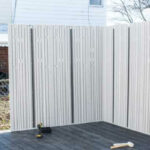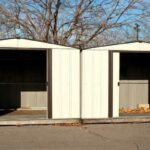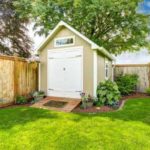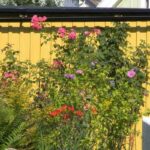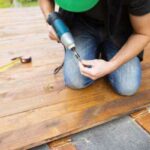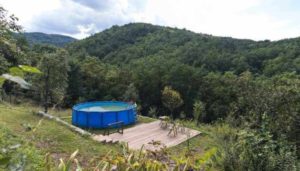Most sheds I have had either settled on a concrete slab, over gravel, or on blocks. Blocks were the best for getting the material of the shed off the ground, but that’s only one method of raising a shed.
The most common methods for keeping a shed off the ground are installing a permanent foundation or using bricks, cement blocks, concrete footings, wooden beams, or even pallets (in a pinch).
Let’s look into each of these possible methods.
Why Would You Need to Keep a Shed Off the Ground?
Generally speaking, if you have a shed, it is settled on top of a concrete base or a gravel base. What the base is made of depends on what the flooring is like and how you plan to use the shed. However, in some cases, you may need to raise the shed from being seated against the ground.
If you want to avoid spending money on buying a shed base or if the ground is too hard to dig into, you may need to improvise on a regular foundation. If you have a wooden shed kit, avoid placing the wood directly on the ground because it might encourage dampness, mold, and rotting. Keeping your shed off the ground allows air to flow beneath it. This can keep things cool during hot summer months and helps prevent that mold and rot if humidity becomes an issue.
Animals like raccoons and skunks love to make their homes in sheds and can do severe damage if they get into yours. Keeping it off the ground keeps them out for the most part. Theoretically, being raised off the ground more keeps them from climbing up onto your roof. Rodents like rats and mice are often drawn to sheds because they offer shelter from predators, warmth, and food sources (if you store seeds, for instance). By keeping your shed elevated and away from any trees, shrubs, or hedges, you’ll be able to keep these pests at bay.
Another reason you may need to raise the shed off the ground more is if you live in a flood plain. If your shed is on the ground and there’s any chance of flooding, there’s a chance that it will get flooded and ruined. Keeping it off the ground means that if water does come through, it won’t reach your belongings inside. And even if it doesn’t flood, insufficient drainage can be just as disastrous, weakening the shed from beneath thanks to rust, mold, and rot.
What Kind of Foundations Help Keep a Shed Off the Ground?
When building a shed, it’s important to consider how you will keep the bottom off the ground. We’ve already covered why – now let’s cover how.
Installing Permanent Foundations
Permanent foundations are another option for keeping your shed off the ground. These are usually made from poured concrete and extend below ground level around the perimeter of your shed’s foundation. They’re more expensive than concrete footings but are more durable. You’ll need help from an experienced contractor for this project.
Using Bricks or Cement Blocks
The easiest way is to use bricks or cement blocks underneath the shed. This is a great way to keep your shed off the ground because it’s easy and inexpensive. You can find these materials at any home improvement store, so you can spend less on them. They also come in different sizes, so you can choose whatever fits your needs best.
You simply need to lay them out and level them in an area that will hold your shed and then place your shed on top of them. Concrete or cinder blocks are also excellent options.
Using Concrete Footings
Concrete footings are an excellent way to keep your shed off the ground because they provide solid support. Remember, they can be challenging to install and more expensive than blocks or wooden foundations. However, once installed, concrete footings are incredibly durable and will last a long time. Depending on where you live, you may need to hire an excavator to dig deep holes for each footing.
Using Wooden Beams
Another option is to use posts and beams. This method can get pretty expensive depending on what kind of posts and beams you want to buy, but it will give you more options when choosing where you want your shed placed. Use pressure-treated lumber to protect it from moisture, which can cause damage over time. You can also put plastic on top of the ground as a vapor barrier before anything else.
Most sheds I’ve seen that use wooden beams as their foundation pieces use treated 2x6s for this purpose. You’ll have to cut each board down to fit your shed’s footprint and then attach them together on all four sides.
Using Pallets in a Pinch
Another option is using pallets underneath your shed. The advantage is that it’s cheap. It’s also easy to find pallets. You can usually find pallets at local grocery stores and other stores that carry products from companies that ship their goods by truck or train.
If you want a long-lasting foundation for your shed, there are better options than this one. The downside is that they tend to rot over time if they aren’t treated properly. It also only works for lighter sheds. However, if cost is an issue, it could work short term.
If you need help determining whether you can install a shed using any of the foundations listed above, check with your local building department first. For instance, building a shed on the ground in some areas is illegal without using concrete footings and posts. In some locations, sheds have to meet specific wind rating guidelines. There’s also the question of placement and how high it should be off the ground. A city or county ordinance may govern these things, so be sure before you build.

